LAST UPDATED: November 5th, 2020
In the last few years, the words “Run n’ Gun,” and “Hang n’ Bang,” or whatever term you decide to create, have been highly spoken of in the whitetail world. Simply stated, it’s a mobile way of hunting from a tree. Some prefer a climber, others use stand and sticks. And we can’t leave out the trendy saddle hunter.
And while the mobile method of deer hunting has grown in popularity thanks to a number of Youtube channels and videos, is the method really worth effort? If you’re on the fence about diving into the world of mobile hunting, here’s a quick look at the pros and cons of run-n-gun deer hunting.
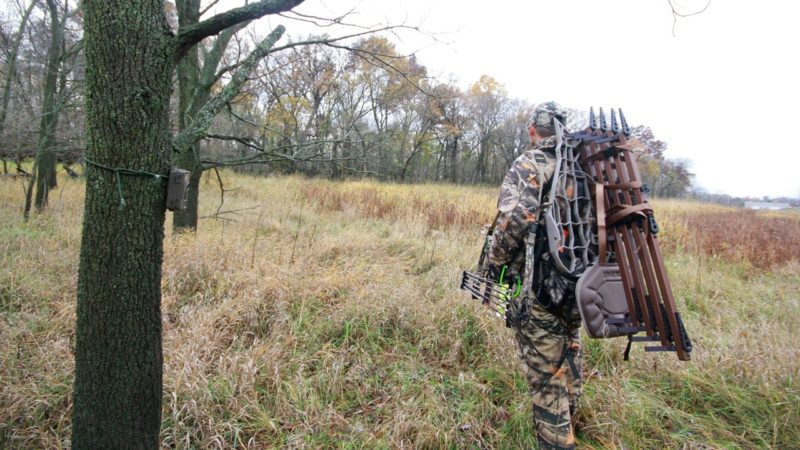
What Are The Pros?
The Ultimate Mobility
The first advantage for mobile hunting is stated in the name. Mobility. Too many times we hunters hang a stand in the summer thinking that deer will walk by presenting shots later in the year. Sometimes that works, but what if it doesn’t?
Are you going to spend your entire season sitting on stands that don’t produce? The answer is, no! You must go find sign, travel routes, trails, pinches and so on. After finding sign, you can set up on it and hunt with the proper wind.
This leads me to my next point. With a mobile treestand set up, you can very easily adapt to changes in the wind. If the wind is not right for a pre-hung stand, throw the stand on your back and hang your mobile set up in a location that favors the wind. The opportunity to be mobile elements the gamble we often take when we settle for a stand that is less than the best.
The First Sit is the Best Sit
It seems that the majority of the whitetail world has figured this point out but, there are always naysayers. For the majority of instances in the deer woods, as a bowhunter, your first sit in the stand is generally going to be your best chance.
Now there are a lot of factors that play into this, however, I am speaking specifically of hunting in a more aggressive fashion.
For example, sneaking into a bucks bedroom, a doe bedding area, or setting up in a pinch point on the correct wind. There are two important points that need to be made to add support for this theory. First, if you do it right, deer are unaware of your presence. If you can sneak in and set up quietly for the first time in that area the deer will not know.
But what about ground scent? Yes, you will leave some ground scent, but it is not the same amount as if you walk into the stand 3 times a week for 2 months. Slipping in ultra quiet and leaving limited ground scent are two of the most important pieces to this puzzle.
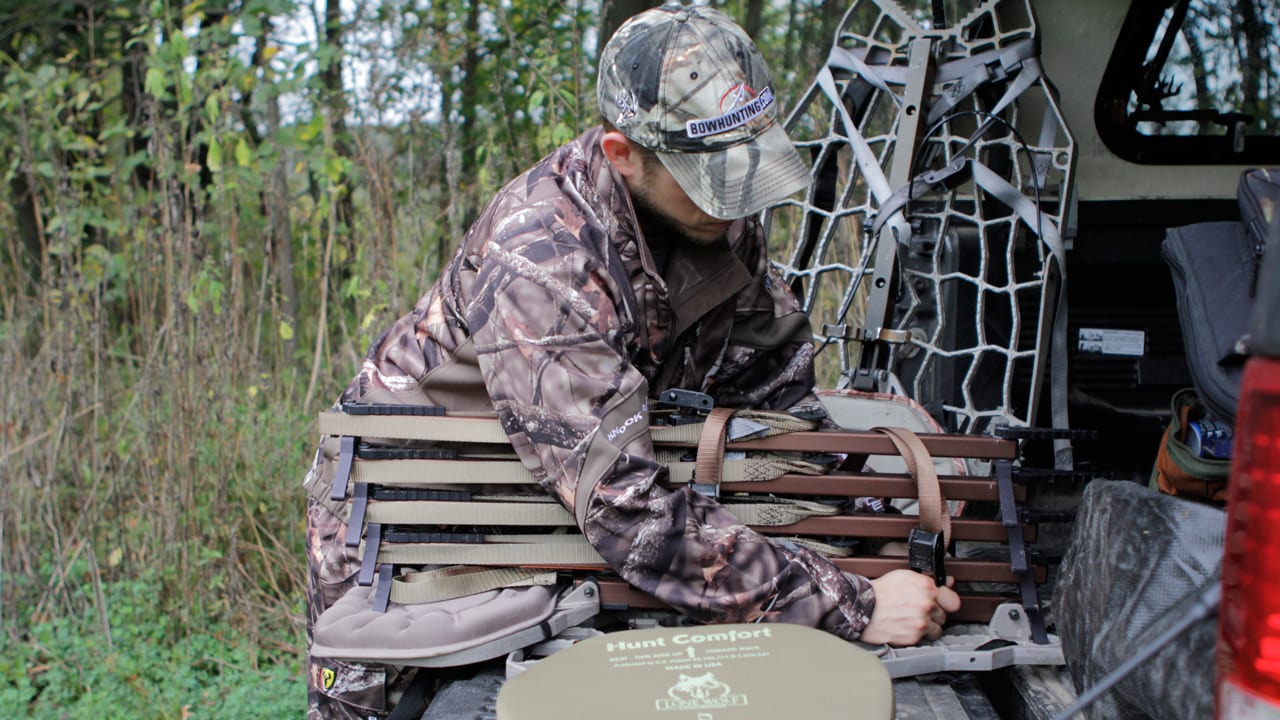
Be Aggressive / Cover More Ground
Being mobile opens up a variety of doors in the whitetail woods. As stated before, mobile set ups allow you to react to the changing winds and find sign, but they also allow you to move and find deer.
If your stands are not producing, then put a stand on your back and walk until you find them. As time goes on you will learn to scout on the fly, set up on fresh sign, and hone in on what looks to be active deer bedding. While scouting on the fly in and around bedding areas, you’ll likely bump a deer from its bed. No big deal. I refer to these as satellite deer. Similar to satellite bulls in the elk hunting woods, they are usually the more vulnerable fawns and immature bucks.
After bumping them, look around for fresh sign, a trail, a crossing, or some beneficial topographic feature and get climbing. Countless times while run-n-gun deer hunting, I have jumped deer and the deer either came back, or a few hours later all the deer pass by without knowing a thing.
Having a mobile set up also allows for you to very easily hunt new tracts of land. If you get permission on a new piece, or go to public land, you can be in and up a tree in no time. If you have a mobile scouting app like HuntStand, you can first cyber-scout, drop way points on places of interest and move in.
Run-n-gun deer hunting truly allows you to stay with the action throughout the season, moving with the deer as they transition from pattern to pattern throughout fall and winter.
What Are The Cons?
A Lot to Carry
A mobile style of hunting whitetails is unfortunately not an easy feat. Before I started exclusively hunting mobile, I enjoyed walking to a tree with a bow and small backpack, climbing up, and waiting it out. When you carry in a climber, stand and steps, or steps for a saddle each hunt, it can start to become a chore.
When I started running trail cameras on public ground, I could not understand why someone would want to tote a stand in an out every sit. Depending on the stand, backpack and gear you carry, the load on your back can push 30-40 pounds. That amount of weight and extra bulk can be a deal breaker for many hunters. Particularly when the old faithful, pre-hung stand option is ready and waiting for them.
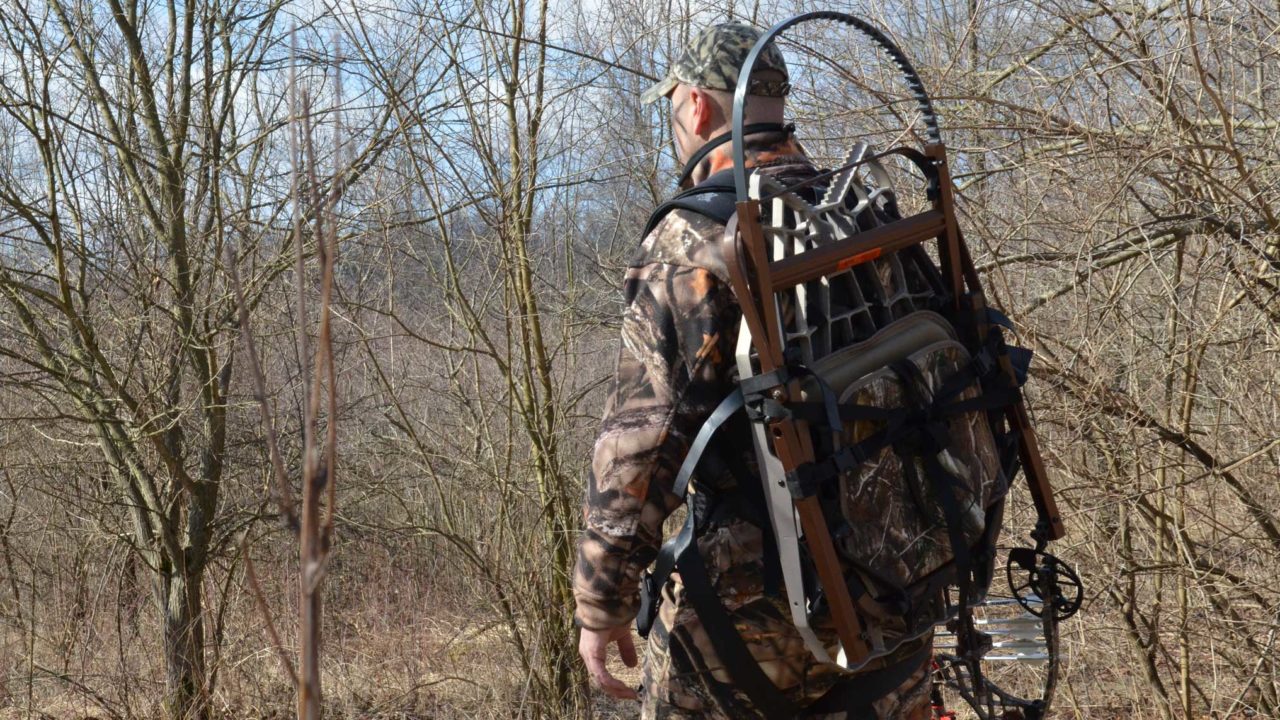
Woodsmanship
If you want to be successful at run-n-gun deer hunting you better have woodsmanship skills on your side. Guys like Dan Infalt are stone cold killers when it comes to mobile hunting, but it’s not something learned overnight. Infalt has spent a lifetime learning the craft. He makes it look easy.
But rest assured, woodsmanship is not a quick and easy skill you learn by watching YouTube. You can’t figure it out through an app. It takes boots on the ground, time and effort to gain the knowledge of the property you are hunting.
When you know the woods, wind direction, bedding areas, food sources and how the deer utilize them, you’ll be a more deadly hunter. Add mobile hunting methods to the mix and you’ll be the most lethal hunter in the woods. The downside, it takes time.
You Must Be More Equipment Savvy
Mobile hunters have to be on their A game. Think about it. They are setting up and taking down their stand every time they hunt. You can get yourself in a lot trouble if you are comfortable and confident in the treestand equipment you are using. No matter what brand, type, or style you decide on, you owe it to yourself to know it inside and out.
The majority of treestand accidents occur when hunters are transitioning from stand to sticks or vise versa. Staying connected to the tree at all times via lineman’s belt and overhead tether is very important. In a normal treestand scenario you can use a lifeline, however when setting up and stripping down it is not possible.
Before you head out into the woods you should be able to hang your stand blindfolded. I suggest trying this at ground level. (Please do not ascend blindfolded.)
Next, the key is being silent and making as little movement as possible. When hanging a stand, this equates to trips up the tree. No matter what method you choose, making one trip up the tree is the efficient way to get in and get hunting.
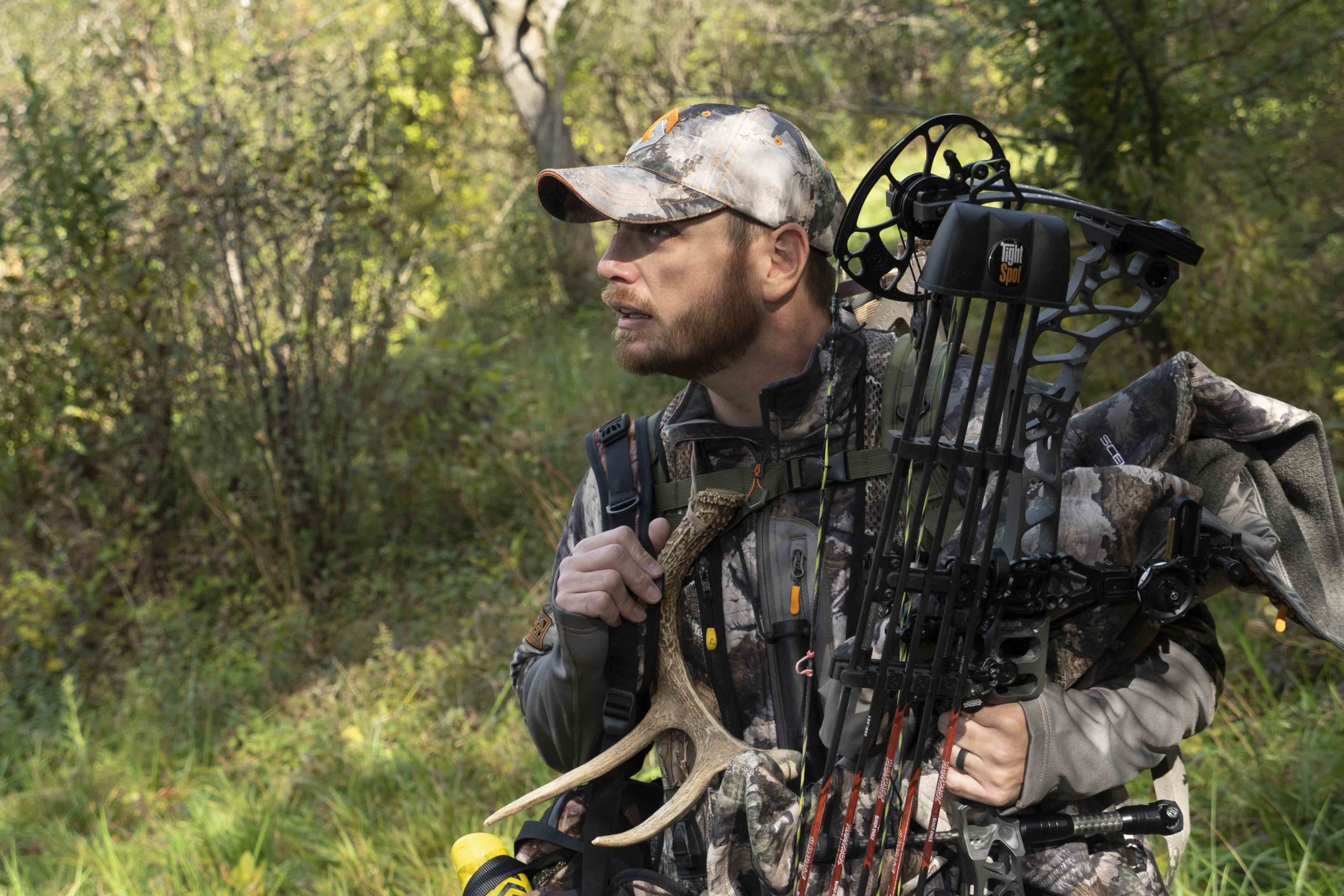
Run-N-Gun Deer Hunting Equipment That Works
I personally use a stand and stick combo system by Lone Wolf Treestands. The stand and sticks alone weigh a total of 24 lbs. If you add tree straps, I would guess the total weight to be around 26lbs.
To carry my hunting necessities like a knife, compass, first aid kit, bow hook, food/drink, light, calls and so on, I use a fanny pack. The fanny pack is awesome because I can clip it around the tree at any desired height once I am in the stand. The fanny pack acts as a shelf in the tree as I can pull and put things into it as I need them. I use a Hunters Safety System tree harness and lineman’s belt to assist me in a hands-free hang.
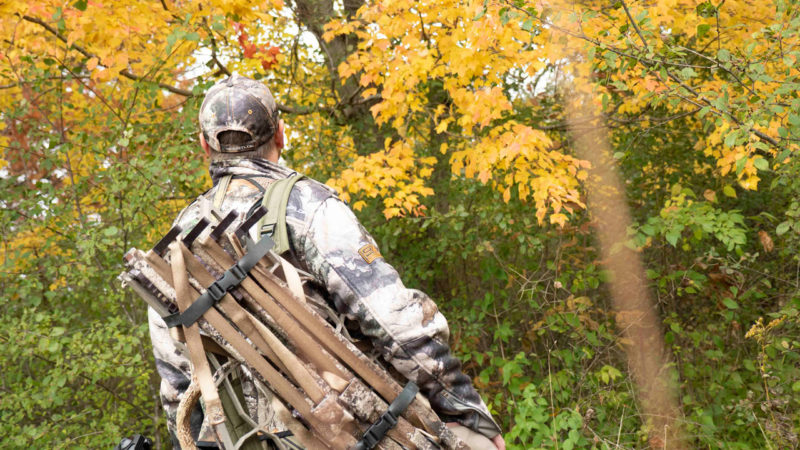
Once I have selected a tree, I connect my bow to my pull up rope and tie it off to my harness. I hang my first stick at ground level, then reach up and hang my second stick above. I then hang my other two sticks from small loops that I tied on to both sides of my tree harness.
With the stand on my back, I hook into my lineman’s belt and ascend up the tree with the stand on my back. As I climb, I hang sticks until I have reached my desired height. Depending on how far I space the sticks I can reach stand platform heights of 22 feet.
When I reach my destination, I hang the stand, which is made extremely simple using Lone Wolf’s versa button system. Once the stand is hung, I give it a “wiggle test,” to make sure that it is locked into the tree, attach my overhead tether and transition to the platform. Once in the tree, I take off my fanny pack, pull out my bow hook and attach them both to the tree. Lastly, I pull my bow up, nock and arrow and get ready.
Run-n-Gun Deer Hunting - Conclusion
There are obviously a lot of good, and some not so good, things that come with hunting mobile in a run-n-gun set up. But when and where you are physically able, run-n-gun deer hunting can prove to be one of the most effective means of punching your buck tag each season.
Like with anything new, it takes time. But once you get comfortable with your mobile hunting setup, the opportunities for success will be wide open. Hunt smart, hunt safe, put the stand on your back and make it happen. Best of luck this season!

 By
By 



